PPT 1.6: Biomechanics and Physiology of Tendons and Ligaments
1/65
There's no tags or description
Looks like no tags are added yet.
Name | Mastery | Learn | Test | Matching | Spaced |
|---|
No study sessions yet.
66 Terms
What does a tendon do?
Attach muscle to bone
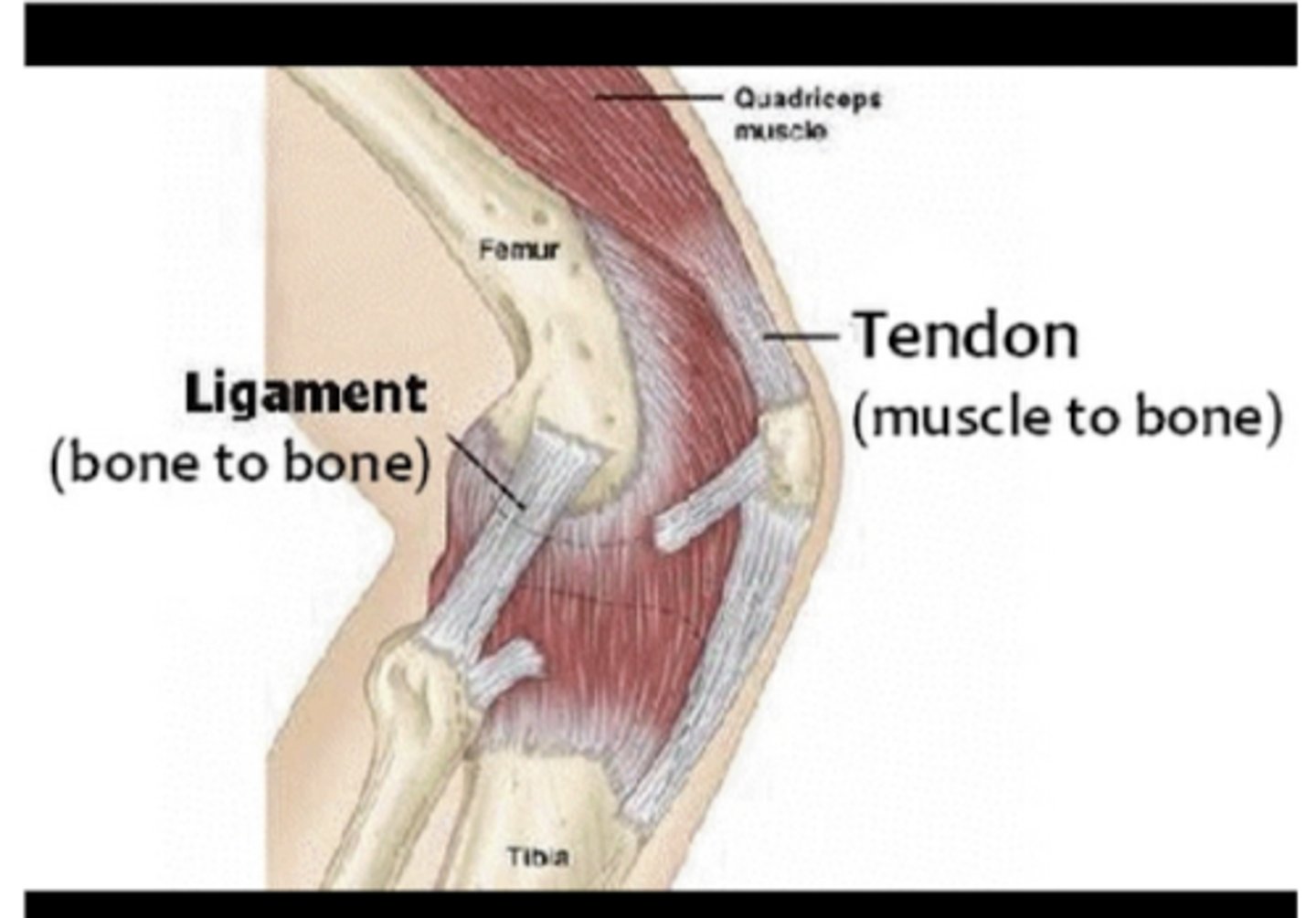
What does a tendon transmit?
Tensile of the muscle load to bone
How does a tendon use proprioception?
GTOs
What does a ligament do?
Connect bone to bone
What does a ligament augment?
Joint stability
What does a ligament prevent?
Excessive mobility
What does a ligament guide?
Joint motion
How does a ligament use proprioception?
Mechanoreceptors
What are tendons comprised of?
1. Cells (20%)
2. Extracellular matrix (80%)
What cells are tendons comprised of?
1. Tenocytes
2. Specialized fibroblast cell
What is the function of cells in tendons?
To produce and degrade extracellular matrix in response to mechanical load
What percent of the extracellular matrix in tendons is water?
55-70%
What is the dry weight of tendons composed of?
1. Collagen (60-80%)
2. Elastin (2%)
3. Proteoglycans (<0.2%)
4. Proteins (4-5%)
What type of collagen is in the extracellular matrix of tendons?
Type I (since they can sustain large tensile loads with some compliance)
What are ligaments comprised of?
1. Cells (20%)
2. Extracellular matrix (80%)
What kind of cells are in ligaments?
Fibroblast
What is the function of cells in ligaments?
To produce and degrade extracellular matrix in response to mechanical load
What percent of the extracellular matrix in ligaments is water?
70%
What is the dry weight comprised of in the extracellular matrix of ligaments?
1. Collagen (75%)
2. Elastin (5%)
3. Proteoglycans (5%)
4. Proteins (10%)
What type of collagen is found in ligaments?
Mostly Type I (85%)
Compare ligaments to tendons.
1. Ligaments have a lower percentage of collagen
2. Ligaments have a higher percentage of proteoglycans and water
3. Ligaments have less organized collagen fibers
How does a tissue get its strength?
Due to the cross-links between collagen fibrils
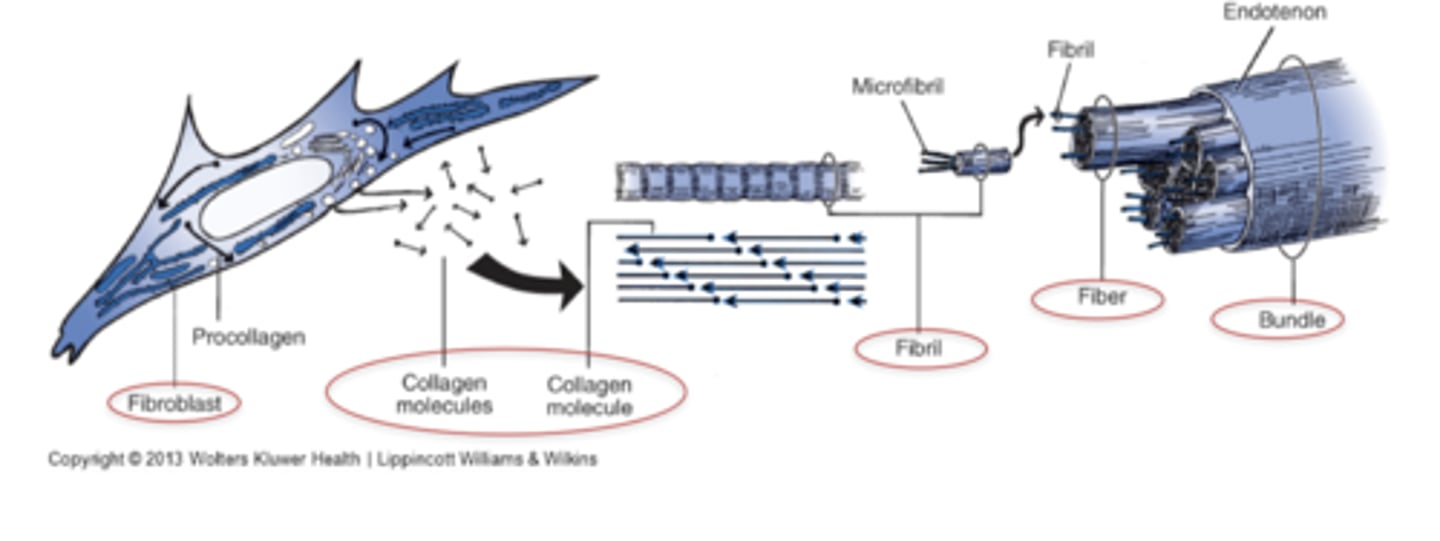
How are tendons and ligaments different in structure and composition?
Tendons have parallel bundles of collagen fibers while ligaments have nearly parallel bundles of collagen fibers
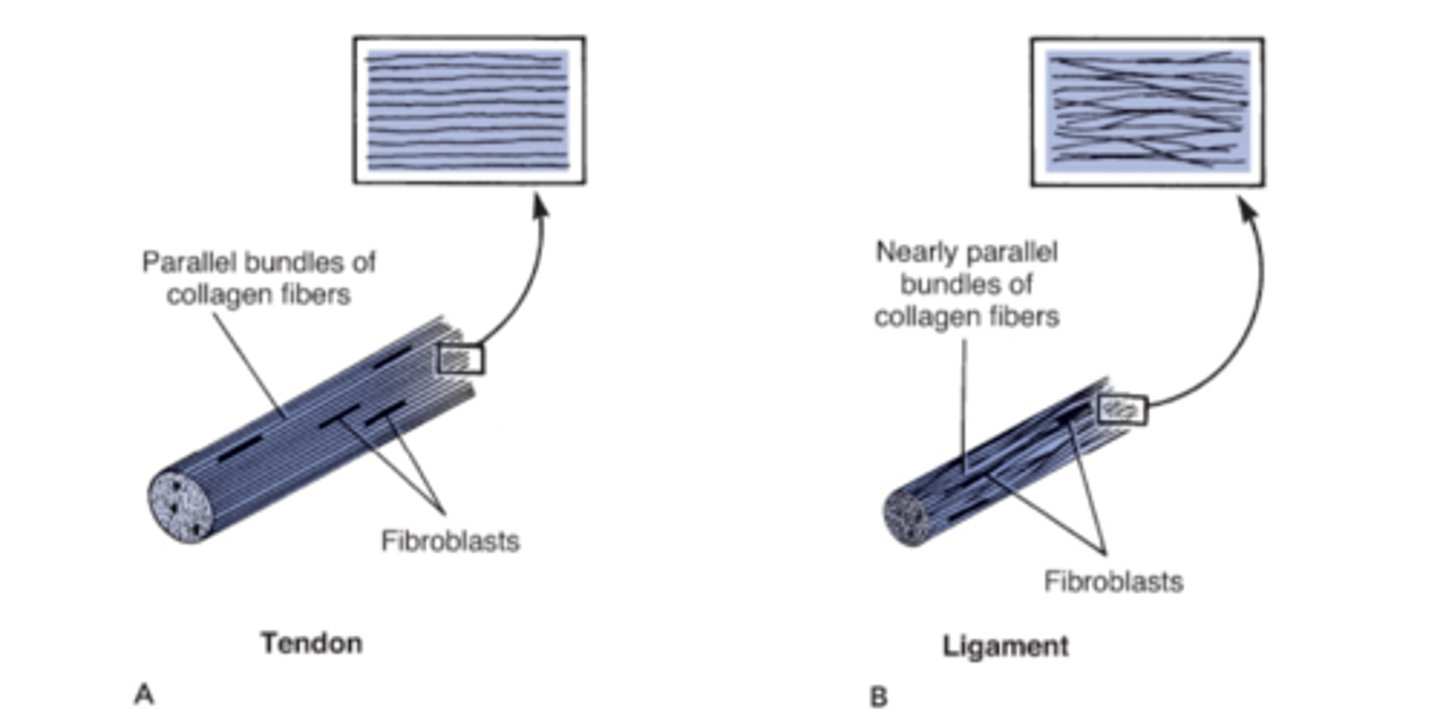
What loose connective tissue surrounds tendons?
1. Paratenon
2. Epitenon
What is a paratenon?
Tendon sheath with two layers to assist in gliding that surrounds tendons
What is an epitenon?
Synovial like membrane, prominent in areas of high friction that surrounds tendons
What percentage of the extracellular matrix in tendons is blood supply?
1-2%
What is blood supply in tendons derrived from?
Vessels in the perimysium, periosteal insertion, or other surrounding tissue
What is loose connective tissue surrounds ligaments?
Epiligament
What is an epiligament?
Connects directly to periosteum of bone
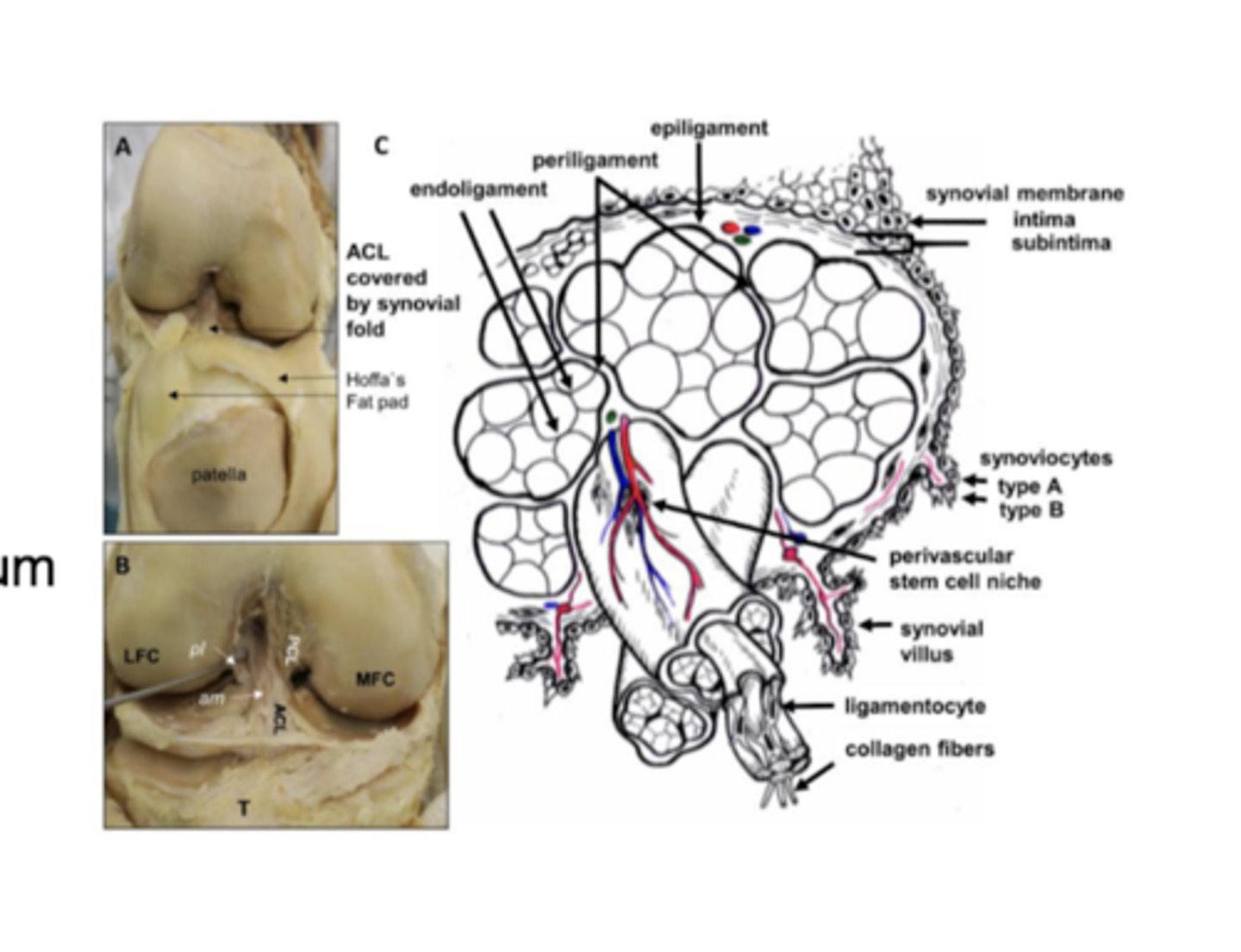
How is blood supply in ligaments?
Sparse as well
What is the epiligament continuous with in terms of blood supply?
The periosteum where blood is obtained
What occurs to blood supply when intra-articular?
The synovium replaces contributes to vascularity
What are the four zones of tendon insertion into bone?
Zone 1: Collagen fibers
Zone 2: Fibrocartilage
Zone 3: Mineralized fibrocartilage
Zone 4: Cortical bone
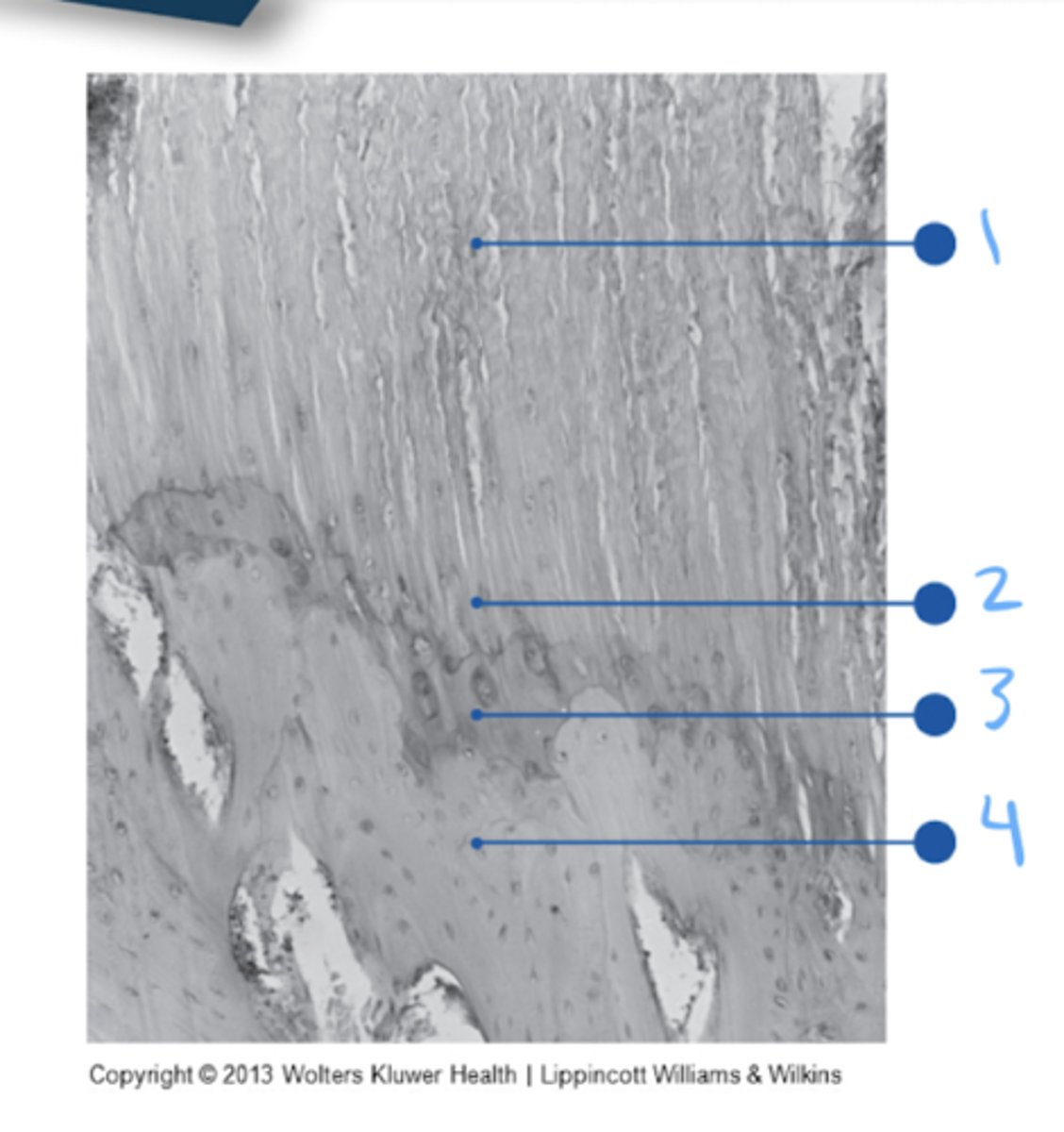
What are biomechanical properties of tendons and ligaments?
1. Viscoelastic
2. Resists tensile forces
3. Flexible

What is hysteresis?
Loss of energy during cyclic loading and unloading of a viscoelastic substance (ex. jumping)
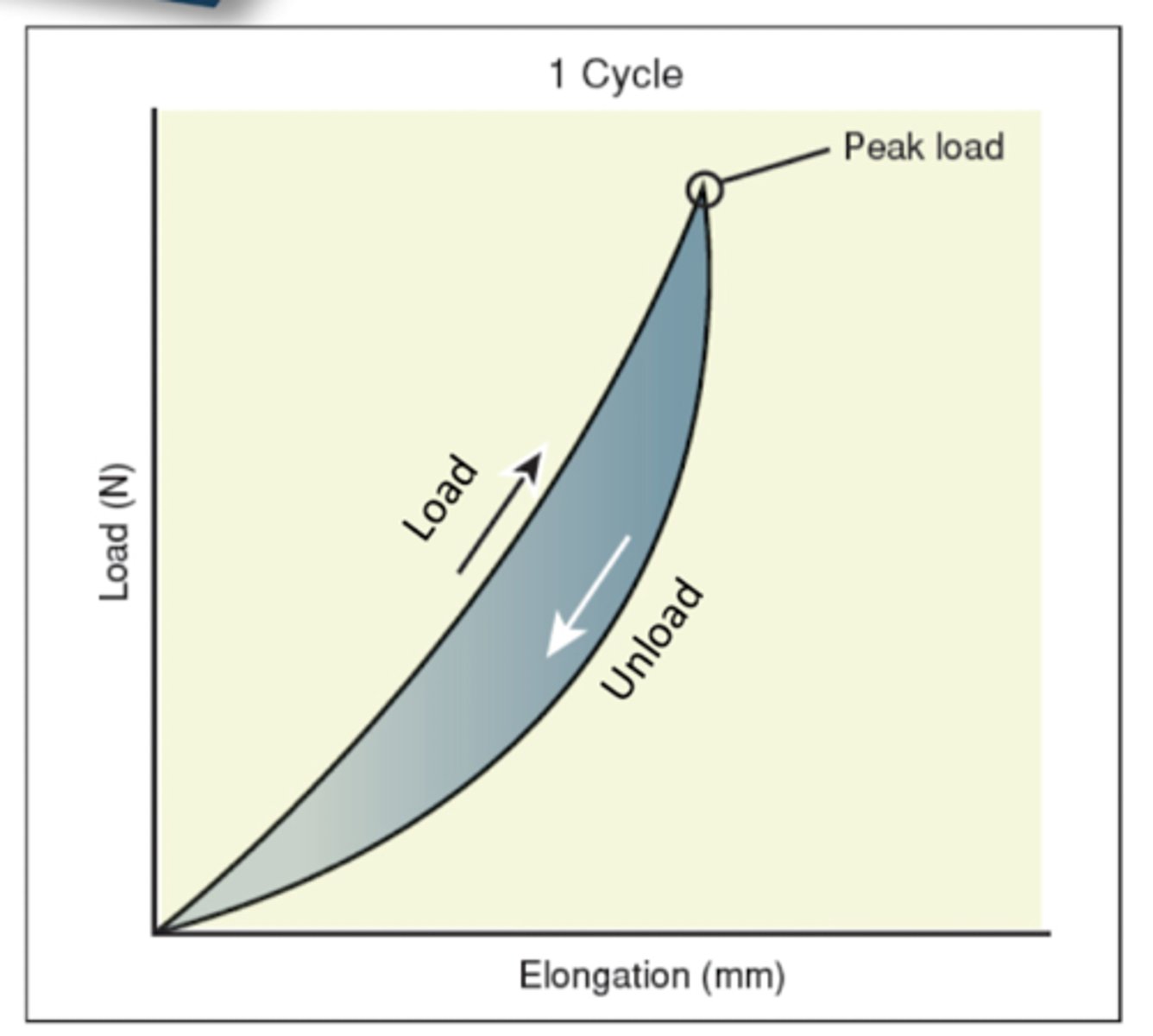
What does the elastic component of tendons allow?
Return to original shape
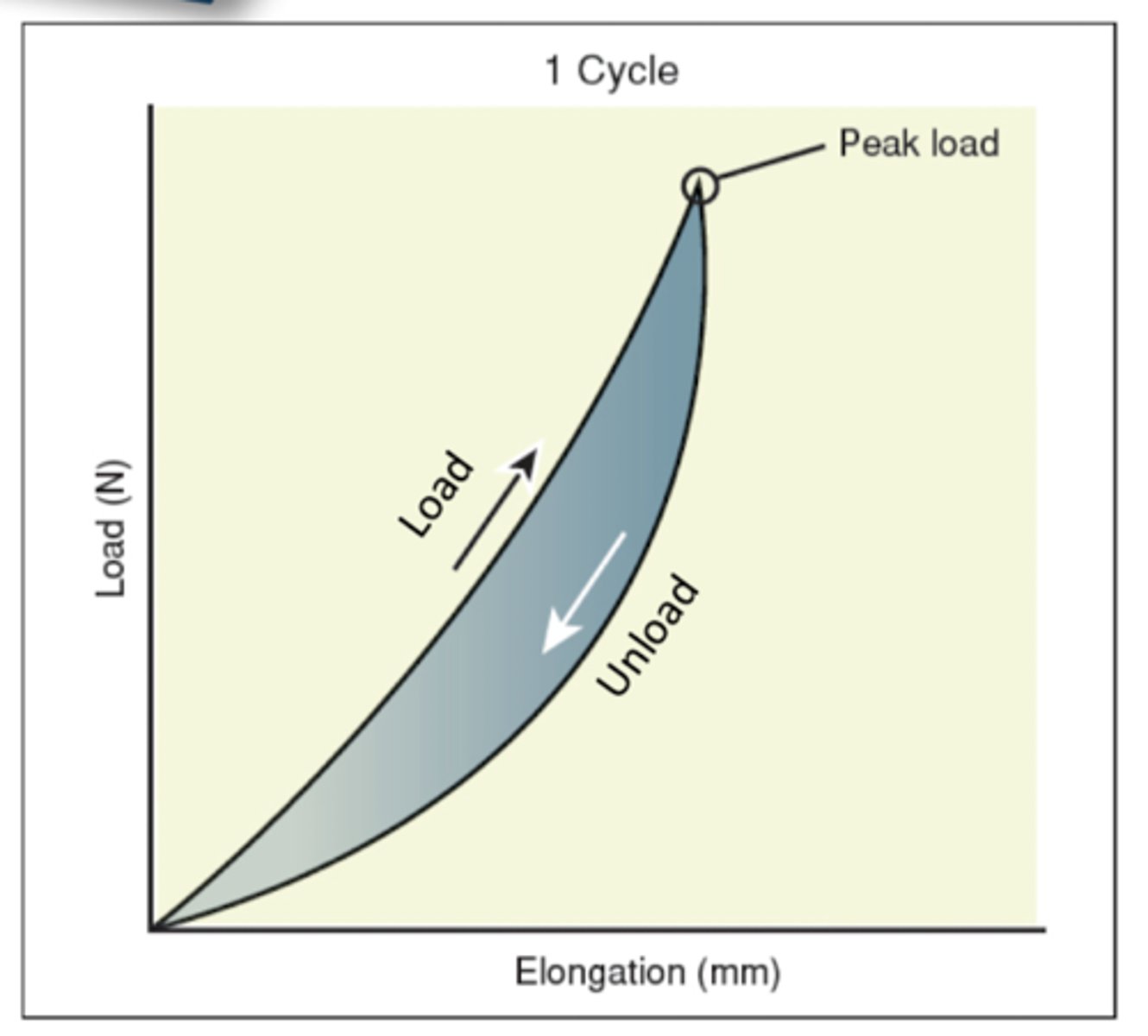
What are repetitive strain injuries?
Despite low loads, cumulative damage from repeated elongation and shortening
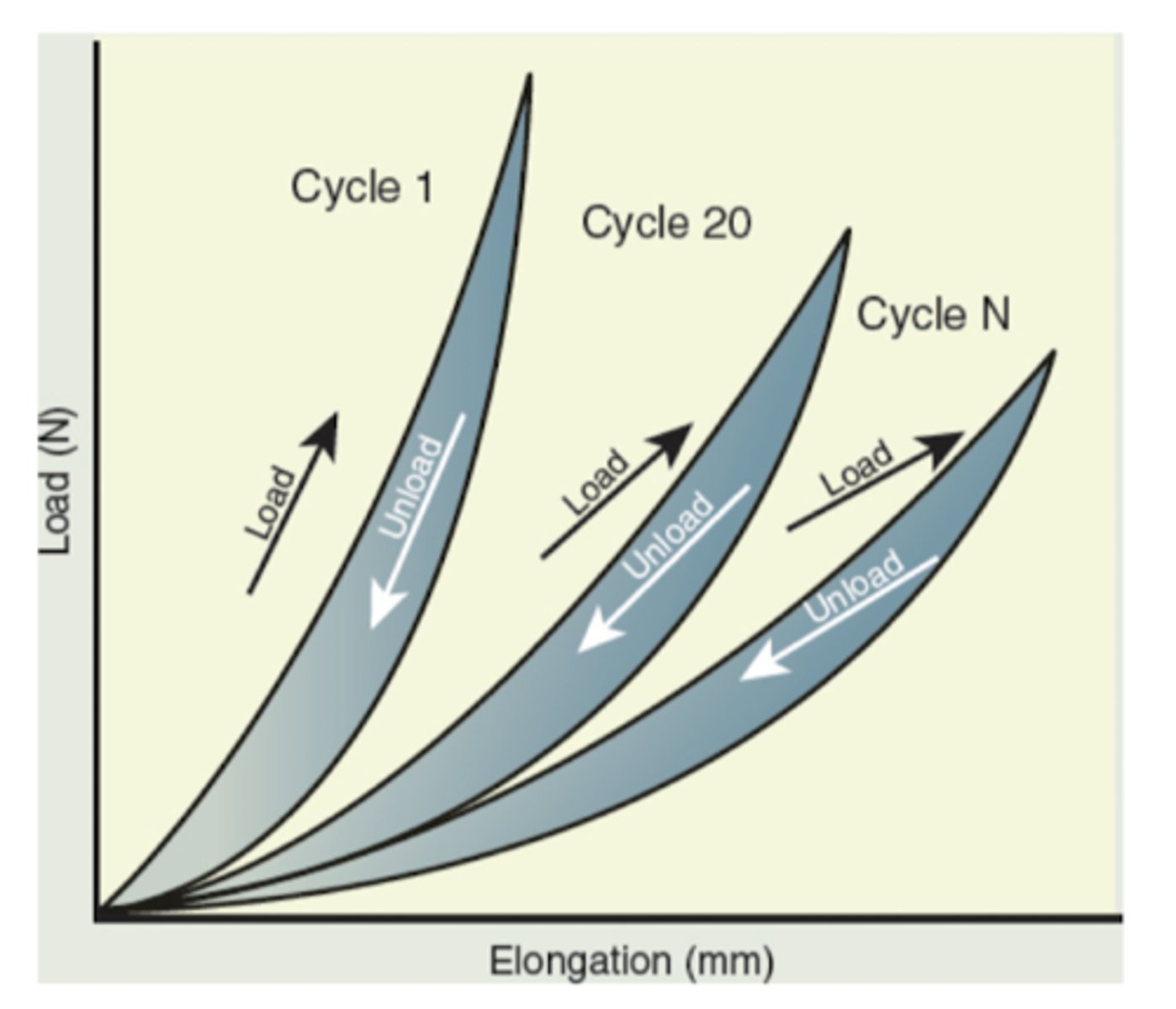
Why does pain occur during repetive strain injuries?
Inflammation (neurovascular ingrowth?)
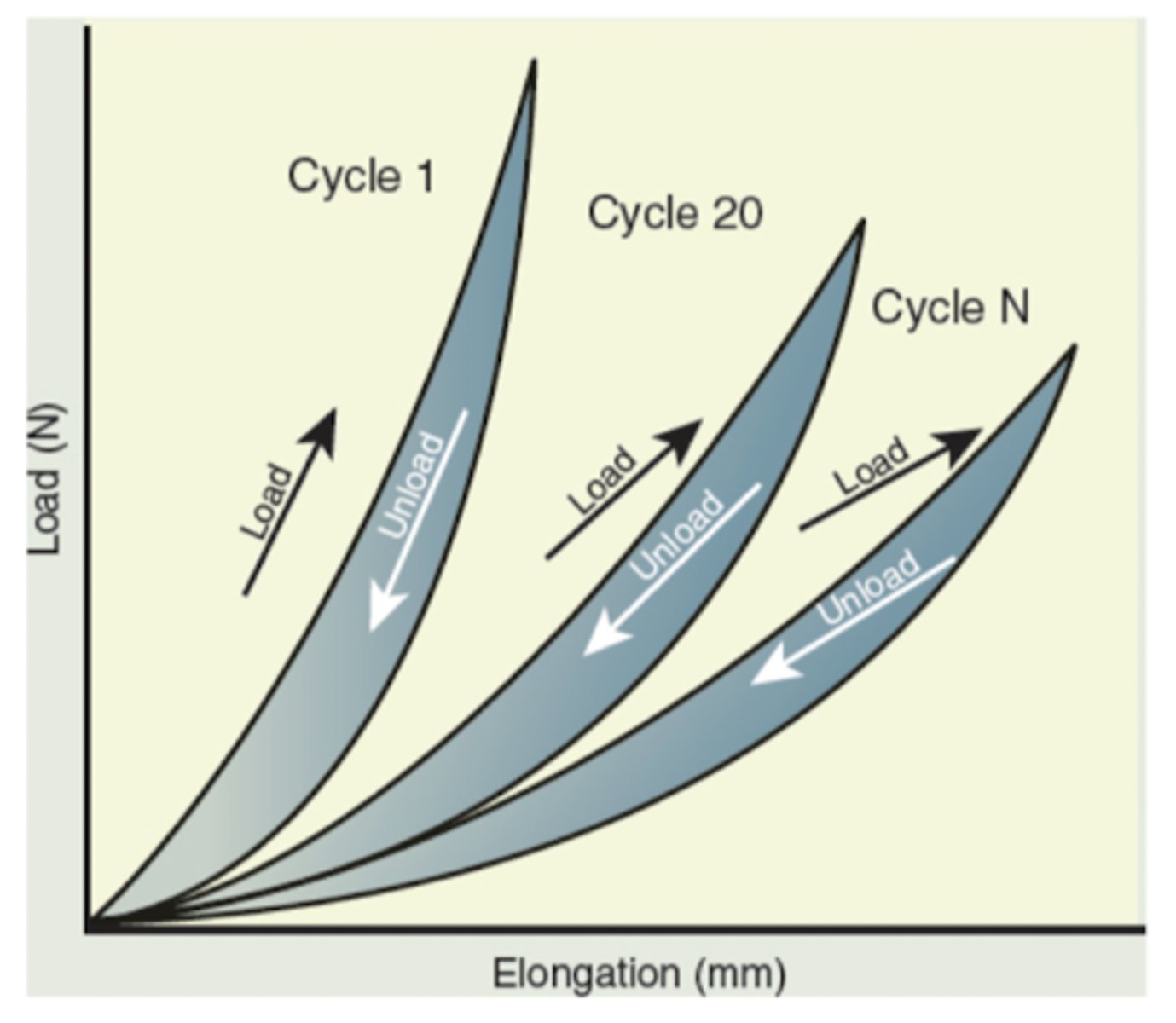
What are other factors of repetitive strain injuries?
Age, force, ergonomic factors
What is viscoelasticity?
All biological material having fluid and solid like properties
What is material behavior dependent on?
Time or rate
What is load(stress)-relaxation? (2)
1. Specimen is stretched to constant length
2. Initial rapid decrease in stress and then more slowly
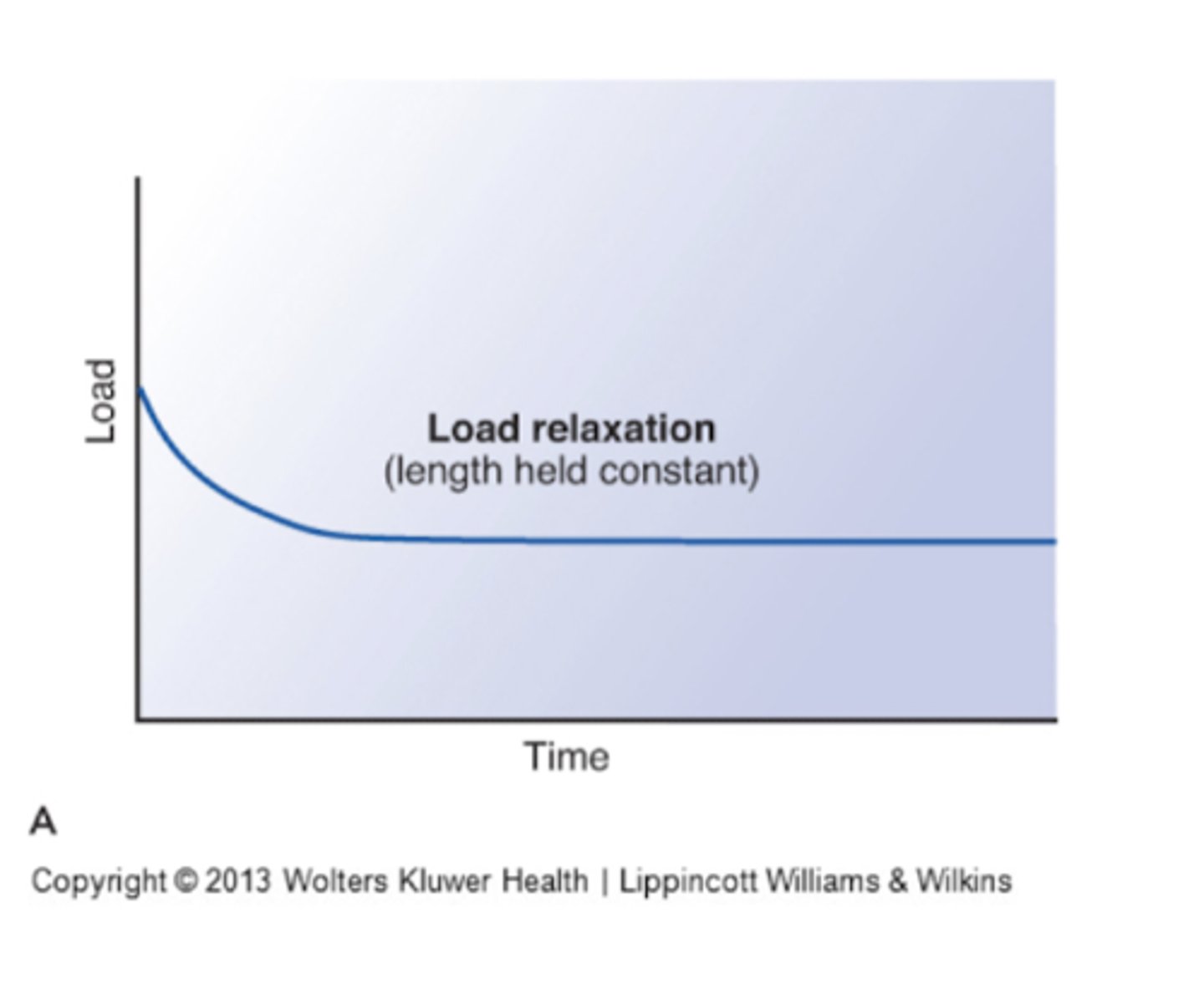
What is creep-deformation? (2)
1. Specimen placed under constant load (stress is constant)
2. Length (deformation) initially increases rapidly and then more slowly
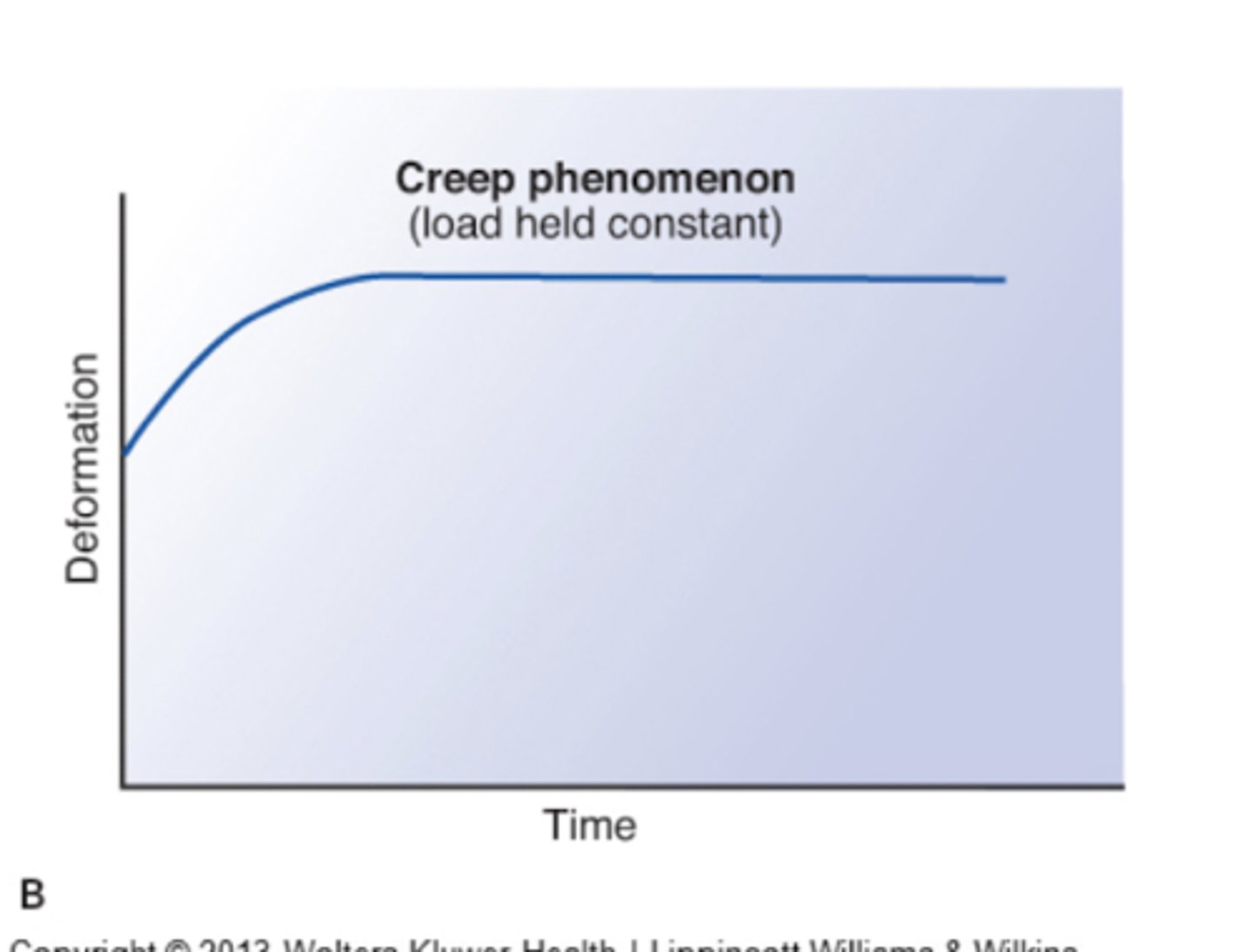
What are the four areas of ligament failure? (4)
1. Loads for clinical knee test
2. Physiologic activity
3. Microfailure
4. Complete rupture
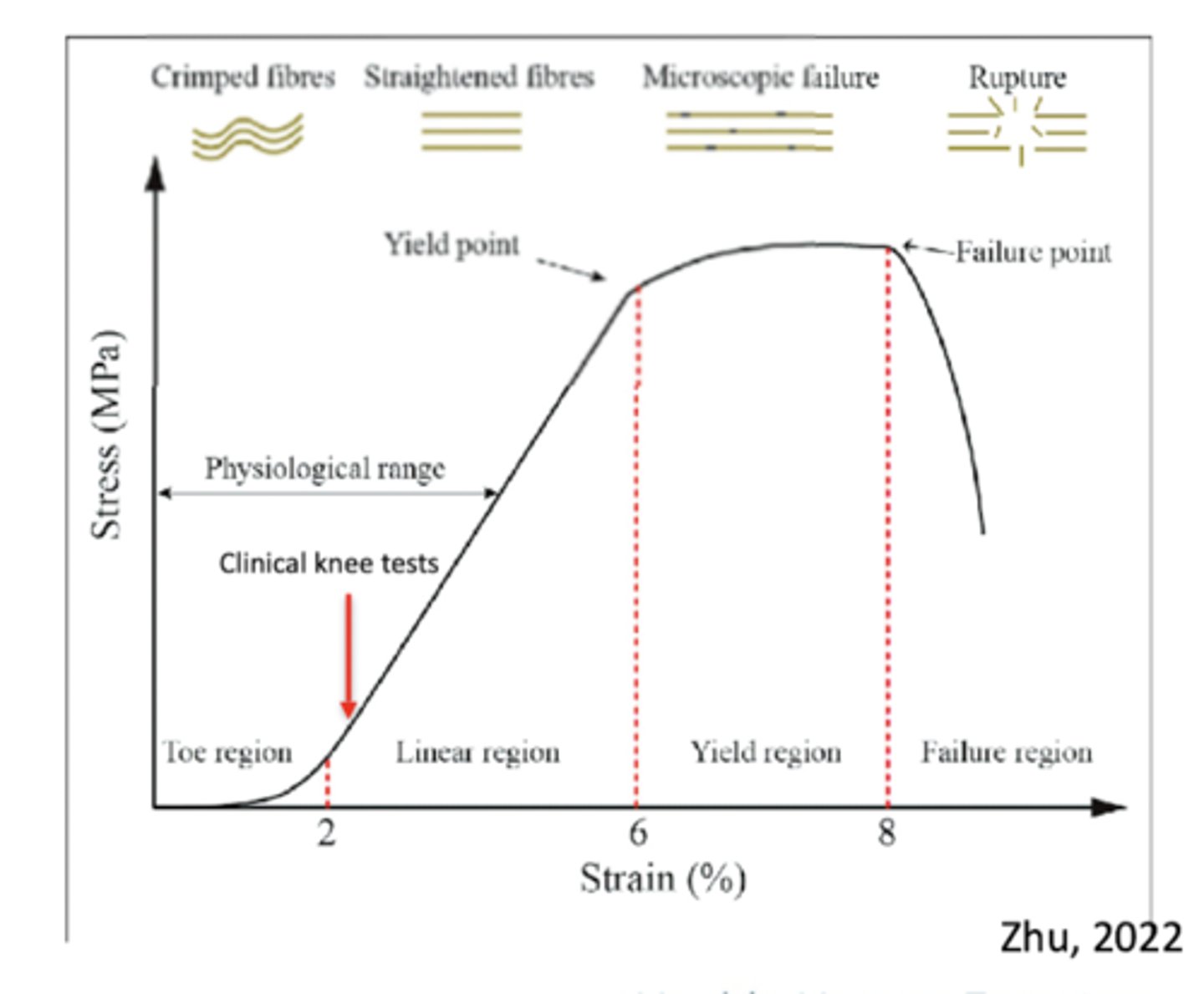
What are the factors affecting biomechanical behavior?
1. Maturation/aging
2. Pregnancy/postpartum
3. Mobilization/immobilization
4. Comorbidities
5. Pharmacalogical agents
How does maturing/aging affect biomechanical behavior?
Insertion point has the optimal strength at skeletal maturity
When does optimal crosslinking occur?
Strength is reached at age ~20
What occurs as you are greater than 20 years old?
Diameter of tendon/ligament and density of fibrils decreases
How does pregnancy/postpartum affect biomechanical behavior?
Relaxin affects the production of collagen from fibroblasts by decreasing tensile strength and stiffness
How does mobilization/immobilization affect biomechanical behavior?
More activity = stronger
Less activity = weaker
How do comorbidities affect biomechanical behavior?
1. DMI (Metabolic influence/shift)
2. Inherited conditions that alter the structure or density of collagen
How do injuries occur in tendons and ligaments?
High stress, high strain, or both
What are tendon injuries related to?
Cross sectional area of tendon and amount of force due to contraction
What is tendinopathy?
Inflammation of a tendon (multifactorial)
How do injuries in ligaments occur?
Due to viscoelasticity (fast rate -> ligament failure; slow rate -> bone failure)
What are the three types of common ligament injuries?
1. First degree sprain
2. Second degree sprain
3. Third degree sprain
What occurs during a first degree sprain?
Pain, but no join instability
What occurs during a second degree sprain?
Pain and joint instability
What occurs to collagen fibers in a second degree sprain?
Partial rupture (failure of some collagen fibers)
What is a third degree sprain?
Pain, complete instability
What occurs to collagen fibers in a third degree sprain?
Total rupture
What are the phases of tendon and ligament repair?
1. Inflammatory
2. Proliferative
3. Remodeling/maturation
What occurs during the inflamatory phase of tissue repair?
Hematoma forms
What occurs during the proliferative phase of tissue repair?
Fibroplast proliferation
What occurs during the remodeling/maturation phase of tissue repair?
Collagen matrix maturation